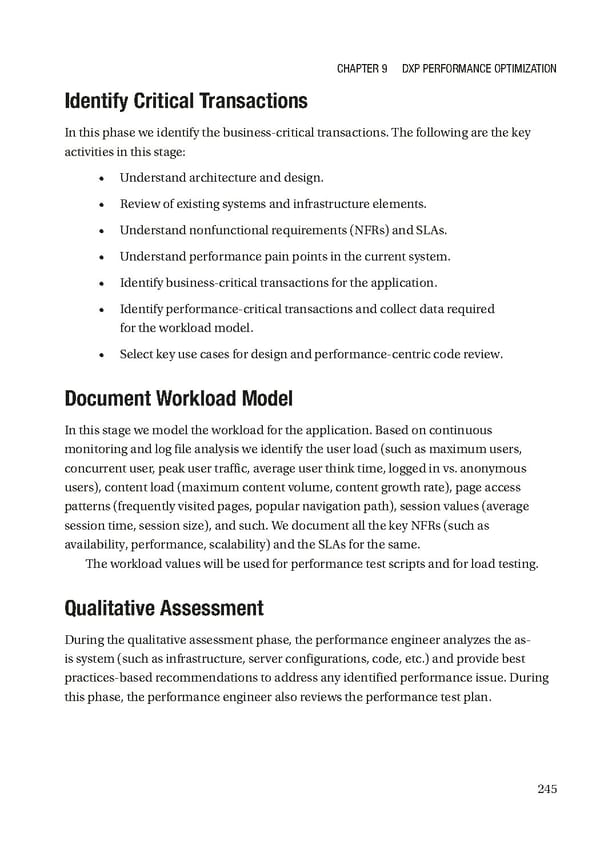CHAPTeR 9 DXP PeRfORMANCe OPTIMIzATION Identify Critical Transactions In this phase we identify the business-critical transactions. The following are the key activities in this stage: • Understand architecture and design. • Review of existing systems and infrastructure elements. • Understand nonfunctional requirements (NFRs) and SLAs. • Understand performance pain points in the current system. • Identify business-critical transactions for the application. • Identify performance-critical transactions and collect data required for the workload model. • Select key use cases for design and performance-centric code review. Document Workload Model In this stage we model the workload for the application. Based on continuous monitoring and log file analysis we identify the user load (such as maximum users, concurrent user, peak user traffic, average user think time, logged in vs. anonymous users), content load (maximum content volume, content growth rate), page access patterns (frequently visited pages, popular navigation path), session values (average session time, session size), and such. We document all the key NFRs (such as availability, performance, scalability) and the SLAs for the same. The workload values will be used for performance test scripts and for load testing. Qualitative Assessment During the qualitative assessment phase, the performance engineer analyzes the as- is system (such as infrastructure, server configurations, code, etc.) and provide best practices-based recommendations to address any identified performance issue. During this phase, the performance engineer also reviews the performance test plan. 245
 Building Digital Experience Platforms Page 258 Page 260
Building Digital Experience Platforms Page 258 Page 260